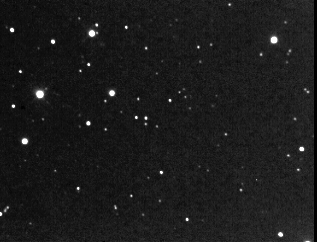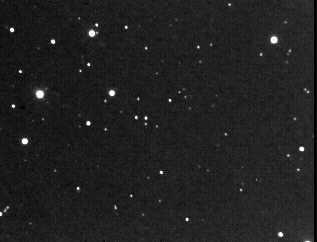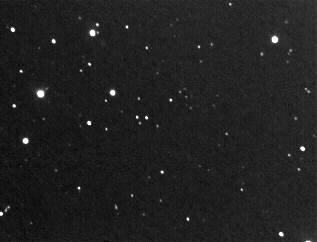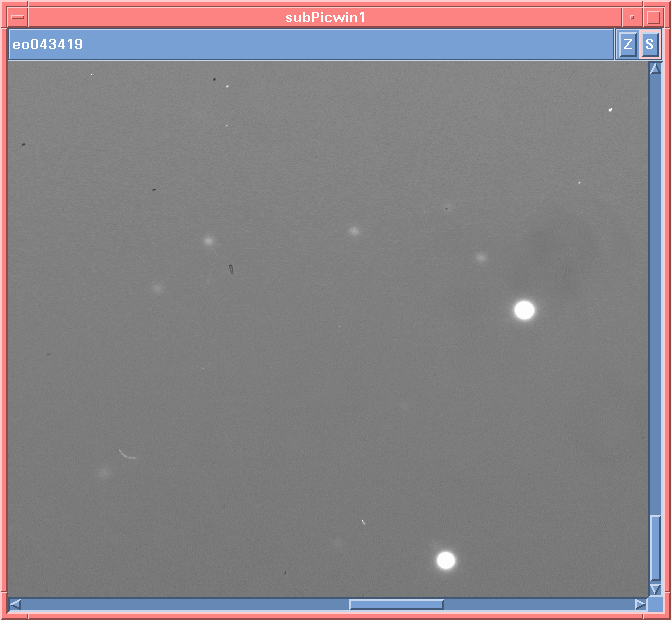ADASTRAgrl |
Alexandria, VA |
Asteroid 4201 Orosz
Way back in 1984, Brian Skiff of Lowell Observatory discovered an asteroid (1984JA1). In 1994, he met me when I attended Universe '94 held in Flagstaff and we became friends. Then in 1996, there were enough observations of 1984JA1 to give it a name. Now Brian has discovered many asteroids and already has one named for himself and the Beatles and some other friends, so he decided to name this one after me. ('Orosz' was my maiden name... ) What did I do to deserve such an honor? I really don't know and I feel guilty about that!
Thank You Brian!
My asteroid is about 25km in diameter and orbits the sun with an average distance of about 3AU. It's not a very bright asteroid - it gets to about mag.15 at opposition.
Here's the text of Brian's email to me...
13 May 1996
Elizabeth,
Congratulations on your new asteroid! On Minor Planet Circular 27126, issued 3 May 1996, asteroid 4201 Orosz was named in your honor. Yes, it's one of my discoveries from about 12 years ago. The name citation reads as follows:
(4201) Orosz = 1984JA1
Discovered 1984 May 3 by B.A. Skiff at the Anderson Mesa Station of Lowell Observatory.
Named in honor of Elizabeth M. Orosz (b. 1970), staff member at Melton Memorial Observatory at the University of South Carolina and friend of the discoverer.
I am sending by regular mail a copy of the MPC containing the name announcement along with a 10-day ephemeris for the rest of the year. You [the asteroid] will be getting to about mag. 15 at opposition in August. Below are orbital elements that will be quite accurate for the rest of this year. The absolute magnitude H implies a fairly large object, something like 25km across.
4201 Orosz
H = 11.0 G = 0.15
mean anomaly = 33.69453
long. of perihelion = 15.22042
ascending node = 238.28139
inclin. = 8.87718
eccen. = 0.23064
semimajor axis = 3.155772
osculating epoch = 1996 Apr 27.0, computed 1996 May 12 by E. Bowell
\Brian
In late April of 2000, I put out a request for help on getting images...
From: adastragrl (adastragrlNOadSPAM@aol.com.invalid)
Subject: asteroid imaging
Newsgroups: sci.astro.ccd-imaging
Date: 2000/04/28
Hello!
Eventually, I will have my own equipment to do this, but I was wondering if anyone was interested in a minor imaging challenge?? There is a particular asteroid (4201) that I would like imaged. Current RA and dec:
09 14 6.61 and +05 40 54
That puts it on the local meridian at about 8 in the evening. I'd like to put the images on my webpage (with the proper acknowledgements) www.geocities.com/adastragrl
Why this asteroid?? It's 'my' asteroid. 4201 Orosz Brian Skiff at Lowell Obs. discovered it back in the 80s. I met him in 1994. In 1997, he had enough data to name it.
He has lots of asteroid discoveries to his name. It might be an interesting project for someone to image Skiff's asteroids. When I get my own ccd, I'll try but until then, if anyone's interested...
Thanks in advance!
Elizabeth Orosz
adastragrl@aol.com
That email got forwarded to some other newsgroups and I got these!

The two individual images are below. Thank You Minor & April! |
30 April 2000
Hi Elizabeth,
See the attached files for images of your asteroid, 4201 Orosz. You can thank Minor White (a major, minor planet enthusiast!) for bringing a copy of your email up to Mount Wilson Observatory last night. With the 24" TIE Telescope and an S-Big ST6 CCD camera, we imaged 2 sequences of 8 exposures @15 seconds each. Total image exposure time is 120 seconds. The images were then resampled (ST-6 does not have square pixels) then a flat field applied. You should have no trouble finding your asteroid, as it's very close the center of the field. If you prefer a different file format, have any trouble opening the files, or you desire additional information, please feel free to email myself or Minor. By the way, I enjoyed your WebPages.
Regards,
April Labrecque
TIE Telescope Operator
Mount Wilson Observatory, Mount Wilson, California
http://tie.jpl.nasa.gov/april/index.html
|

image 1 |

image 2 |
|
Another set of images came from Dr. Bill Owens who took the observations on 9/10 May 2000.Details are as follows...
...each ... is a snippet of the original 4K x 4K image. The second one has a brighter horizontal streak at the bottom -- our CCD chip has four readout ports, each responsible for its own quadrant, and consequently the background level is somewhat different in each quadrant. The second picture just happened to include a quadrant boundary.... Dr. Owens also provided the original raw images for me to play with but they're too big to show here.
...the {original} files are named eo043419 and eo050651. They're just over 32 MB each -- 4096 x 4096 16-bit images followed by a small trailer record. Actually the first 72(?) bytes have been overwritten, but since the outermost 8 or so rows and columns aren't exposed to sky that's no big loss. More significant byte is first. The background level is somewhere around 1800 or 1900, and your little baby is about 100 DN above background. Its coordinates are (2540,3717) in the first file and (1637,1742) in the second, where (1,1) is in the top left corner and (4096,1) in the top right corner. North is down and east is to the right. The numbers in the filenames are the UTC at the start of the exposure. These were 5-minute exposures, sans filter. Again, the UTC date was May 10, 2000. The telescope pointing (J2000.0, decimal degrees):
eo043419 RA 140.148936, DEC 5.627934
eo050651 RA 140.237270, DEC 5.806356
The plate scale is 0.3273 arcsec/pixel, so the field of view is about 22' square.
|

Thank you Dr. Owens! |
|
Needless to say, I am super happy to have these images! I'll admit that I'm 'greedy' and would love to have more! Lowell Observatory provides several aides for observing asteroids on their Asteroid Observing Services page. You can also get an ephemeris from JPL's HORIZONS System (you'll need to change several parameters!). Anyway, if you do get some images, I would love to have a copy! Send me an email to arrange how best to transfer the image(s).
Here's a really neat Interactive 3D Orbit display of asteroid 4201 Orosz courtesy of the Near Earth Object Program.
( Welcome | About Me | Gallery | Links | Site Map )
Last Updated: Monday January 14, 2008 by Elizabeth Warner
© 1995 - 2008 Elizabeth M. Warner



